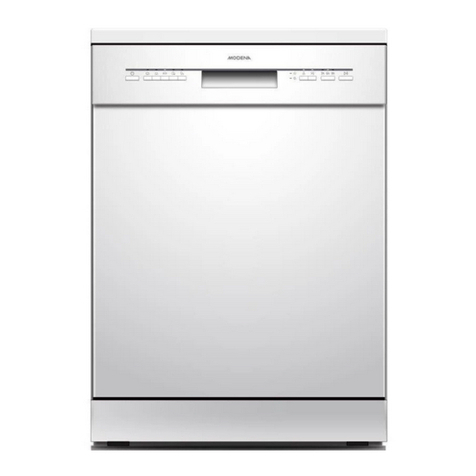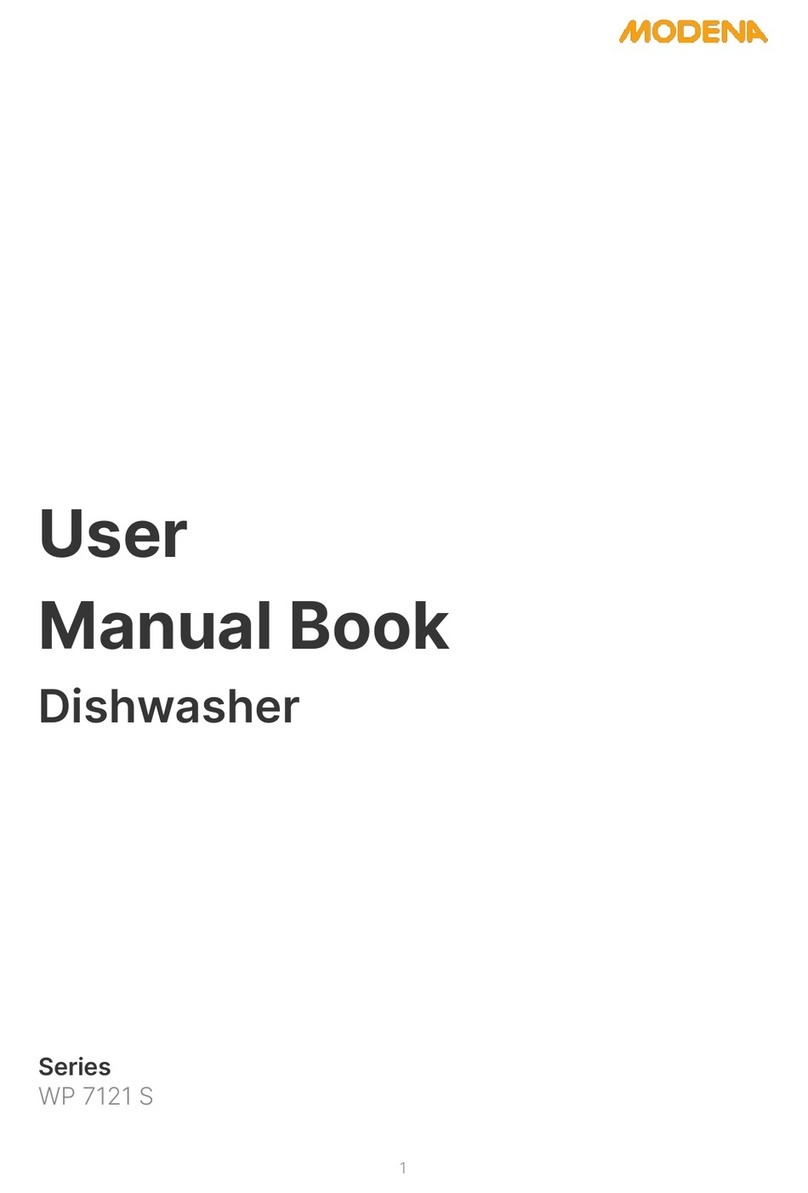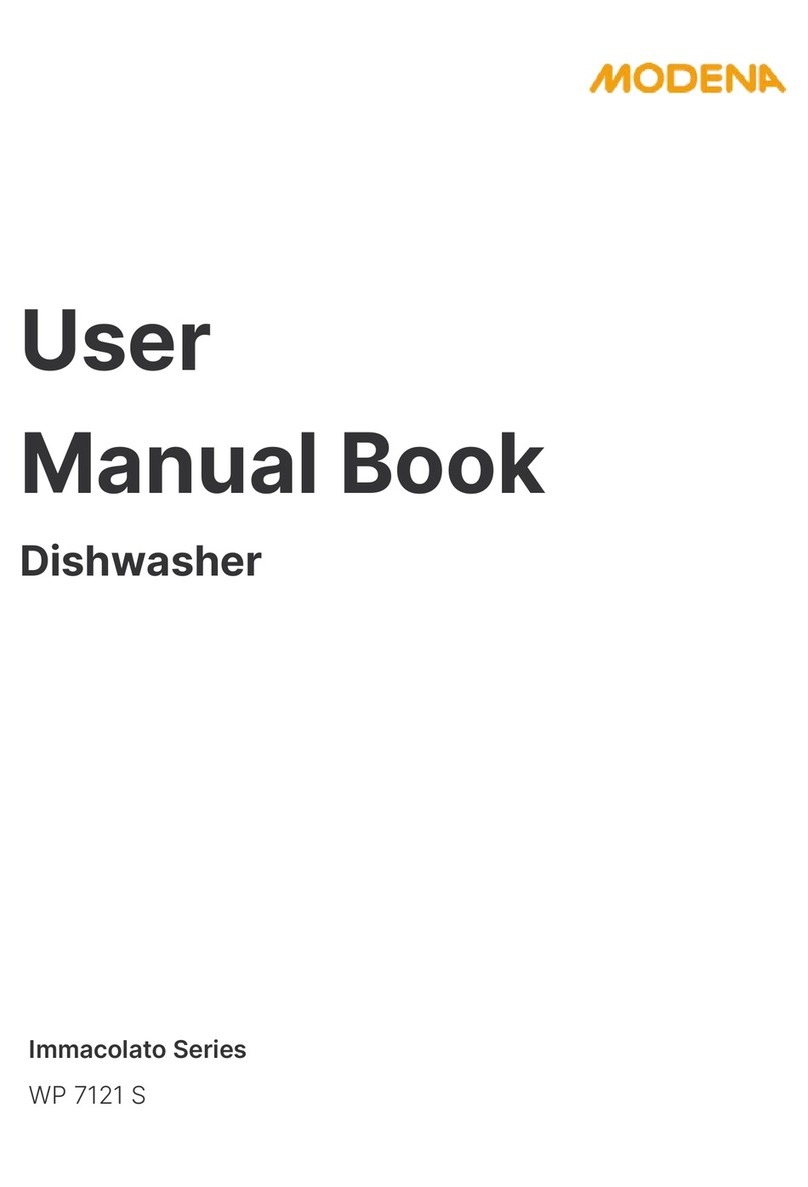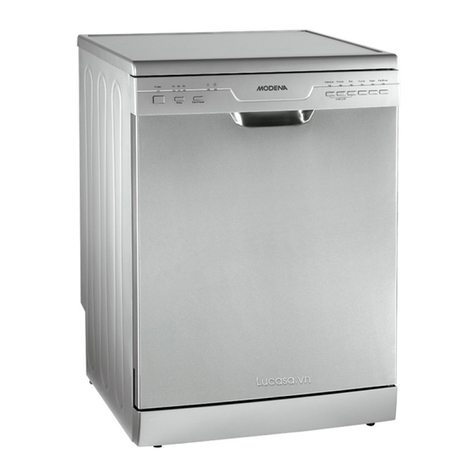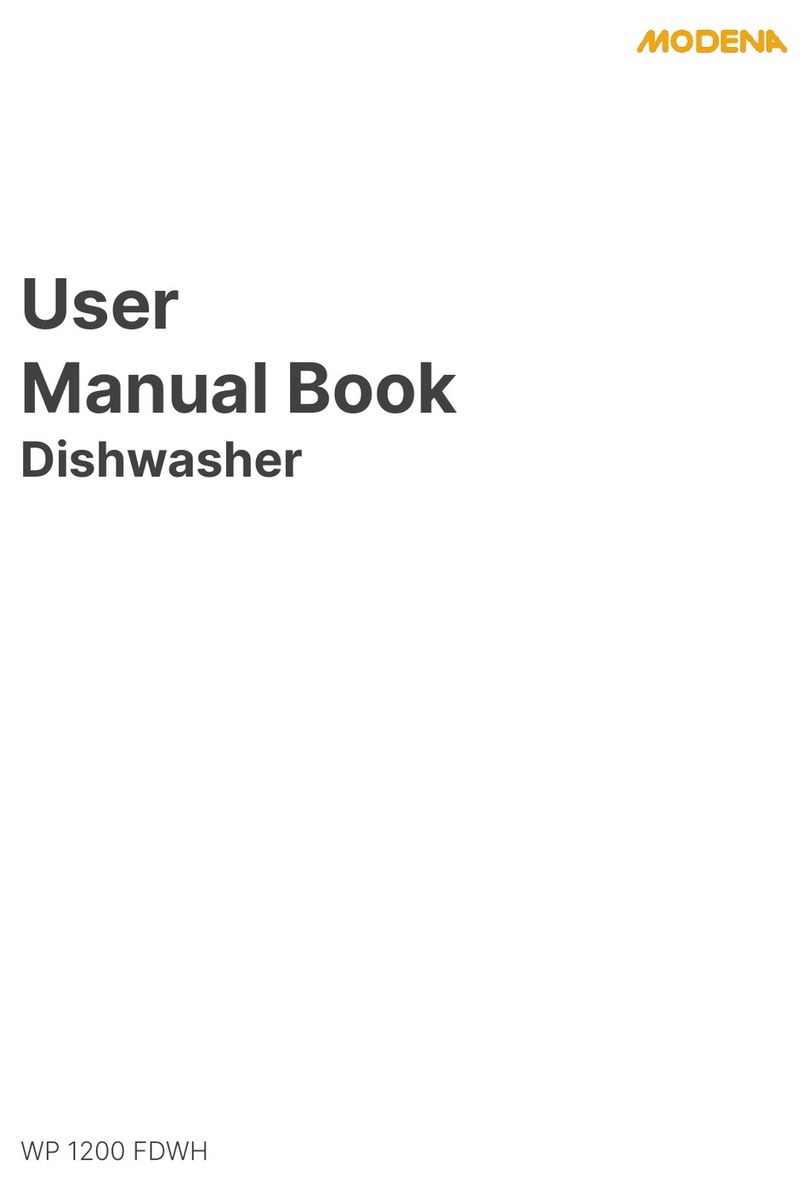5
•For unmarked plastic items, check the manufacturer’s
recommendations.
•Use only detergent and rinse agents recommended for use in an
automatic dishwasher.
•Never use soap, laundry detergent, or hand washing detergent
in your dishwasher.
•The door should not be left open, since this could increase the
risk of tripping. If the supply cord is damaged, it must be
replaced by the manufacturer or its service agent or a similarly
qualified person in order to avoid a hazard.
•During installation, the power supply must not be excessively or
dangerously bent or flattened.
•Do not tamper with controls.
•The appliance needs to be connected to the main water valve
using new hose sets. Old sets should not be reused.
•To save energy, in standby mode, the appliance will switch off
automatically while there is no any operation in 30 minutes.
•The maximum number of place settings to be washed is 8.
•The maximum permissible inlet water pressure is 1MPa.
•The minimum permissible inlet water pressure is 0.04MPa.
Disposal
•For disposing of package and the appliance please go
to a recycling center. Cut off the power supply cable and
make the door closing device unusable.
•Cardboard packaging is manufactured from recycled
paper and should be disposed in the waste paper
collection for recycling.
•By ensuring this product is disposed correctly, you will help
prevent potential negative consequences for the environment
and human health, which could otherwise be caused by
inappropriate waste handling of this product.
•For more detailed information about recycling of this product,
please contact your local city office and your household waste
disposal service.
•DISPOSAL: Do not dispose this product as unsorted municipal
waste. Collection of such waste separately for special treatment
is necessary.
